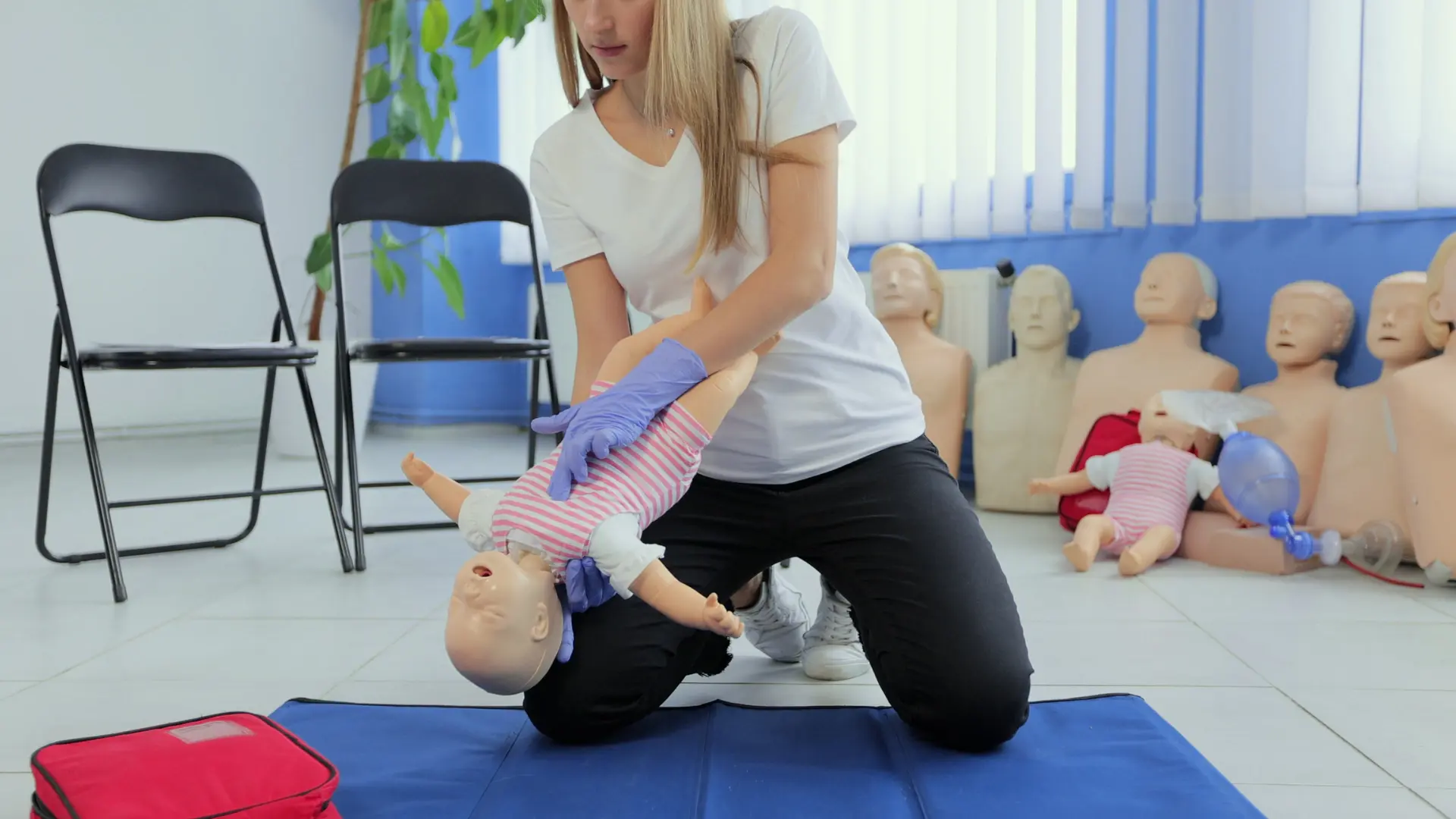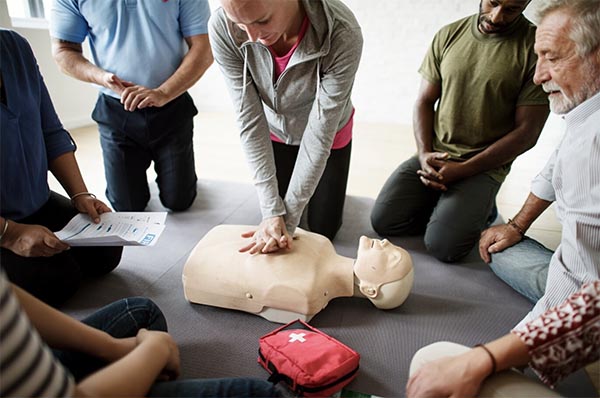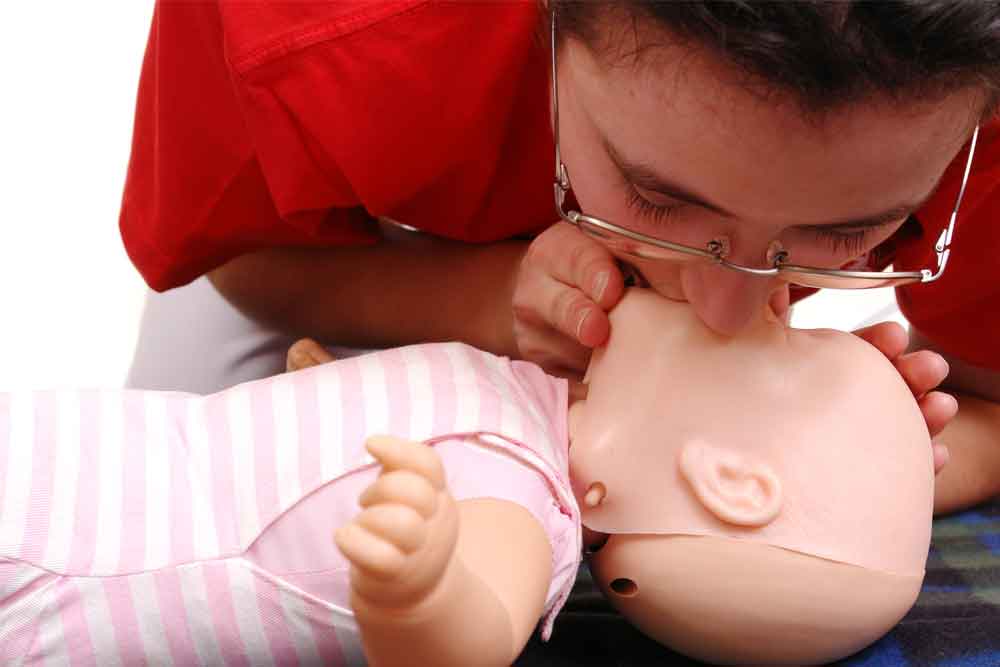On-Site CPR Training Near Downtown Raleigh & Wake Forest
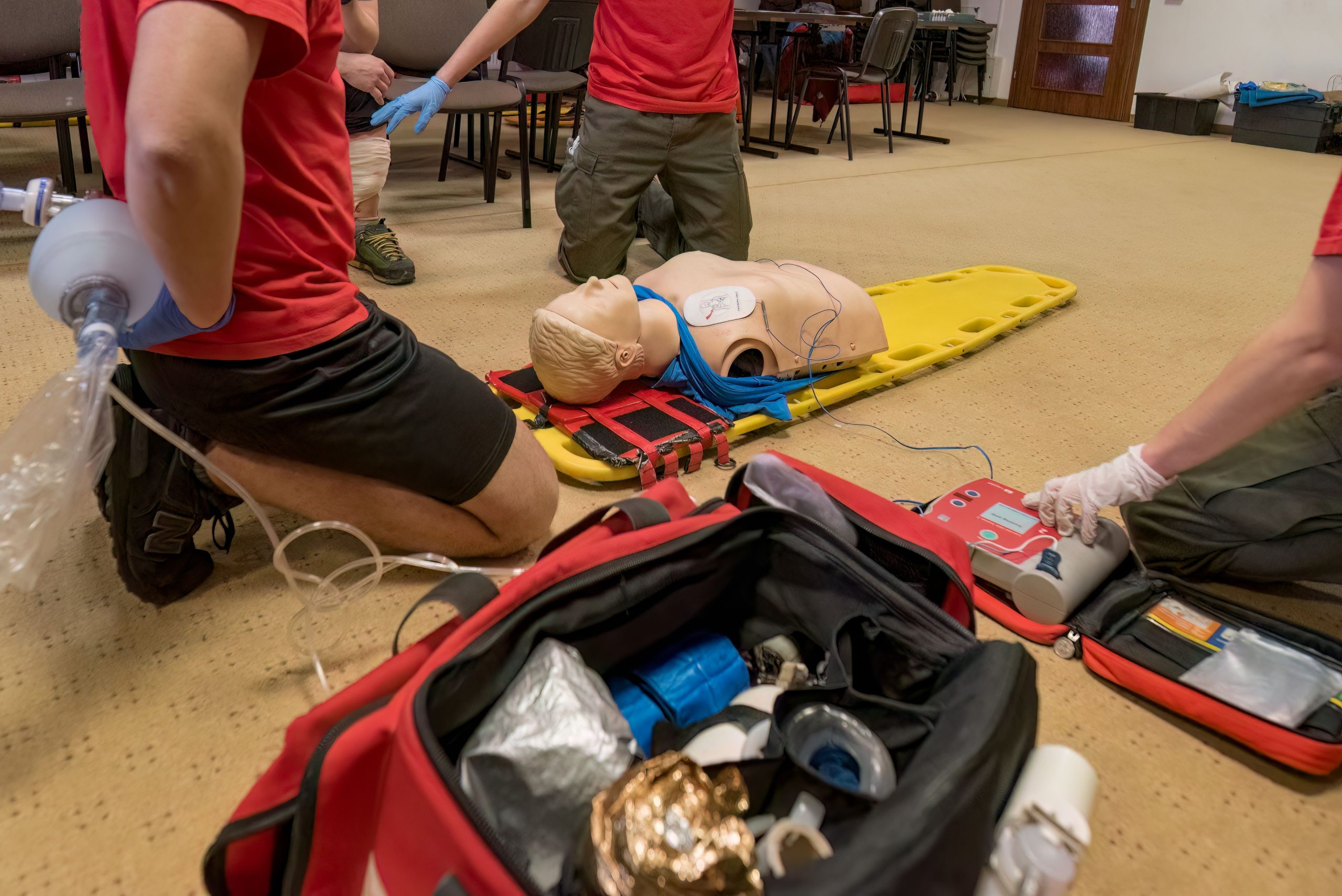
The ability to perform Cardiopulmonary Resuscitation (CPR) is more than just a resume builder; it is a life-saving skill that transforms bystanders into first responders. In the thriving commercial heart of Downtown Raleigh and the bustling community of Wake Forest, ensuring that employees, teachers, and team members are certified in CPR is a critical step in creating a safe environment. Traditional classes often require travel and time away from work, presenting a logistical hurdle for organizations.
However, the solution to this challenge is both simple and highly effective: on-site CPR training. This approach brings the certified instructors and hands-on equipment directly to your location, maximizing convenience without compromising quality. Whether your business is nestled among the skyscrapers of Downtown Raleigh or located closer to the residential and commercial hubs of Wake Forest, securing top-tier, American Heart Association (AHA) certified training has never been easier. This comprehensive guide details exactly why on-site training is the superior choice and how your organization can leverage the services of local experts who specialize in this convenient delivery model.
Why is On-Site CPR Training the Smart Choice for Raleigh and Wake Forest Businesses?
On-site CPR training transforms the logistics of group certification from a burden into a benefit. It is an investment that respects your team’s time and your company’s resources. The traditional model requires coordinating multiple schedules, compensating for travel time, and dealing with unfamiliar training locations.
The on-site model completely eliminates these inefficiencies.
- Minimizing Operational Downtime: When the class comes to you, staff members avoid lengthy commutes to external training centers. They are able to remain on-site and return to their duties immediately upon completion. This dramatically reduces lost productivity and ensures business continuity.
- Convenience for Large Groups: Organizing training for ten, twenty, or even fifty employees is simplified into a single booking. This is especially useful for large organizations in the Downtown Raleigh corridor or growing facilities in the Wake Forest area.
- A Familiar and Comfortable Setting: Learning life-saving skills can be stressful, but training in a known environment—your own conference room or break area—fosters comfort. A relaxed atmosphere enhances the learning experience, encouraging better focus and retention of vital techniques.
- Tailored to Your Environment: An on-site course can be subtly tailored to your specific workplace concerns. While the core curriculum remains strictly AHA-compliant, instructors can focus on emergency scenarios most relevant to your specific business, whether that involves a corporate office, a manufacturing facility, or a childcare center.
- Simplified Group Coordination: Human Resources and departmental heads only need to manage a single event schedule. There is no need to track individual employee attendance and reimbursement for classes held at disparate public venues.
Choosing the on-site model is a clear decision for any Raleigh or Wake Forest business prioritizing efficiency, convenience, and preparedness. It proves that securing critical safety training doesn’t have to disrupt the working week. It is a streamlined approach that gets your team certified faster and with less administrative effort.
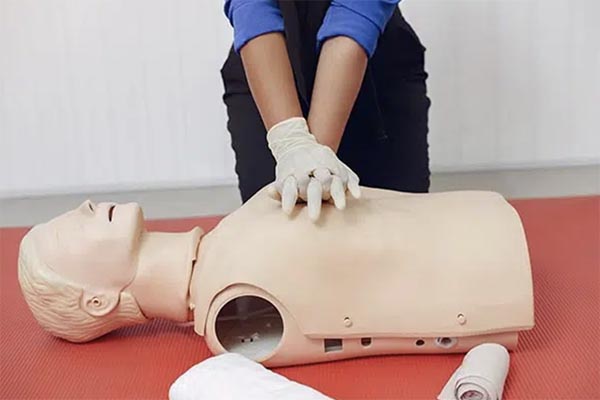
Does On-Site Training Meet the Gold Standard of American Heart Association Certification?
Absolutely. The key measure of any CPR training is its certification authority, and the American Heart Association (AHA) Basic Life Support (BLS) certification is universally recognized as the gold standard. When you choose a reputable on-site provider like CPR Classes Near Me Raleigh, you are guaranteed that the training meets the highest clinical and educational criteria set by the AHA.
Certification standards are meticulously maintained regardless of the training location.
- AHA-Aligned Curriculum: Every on-site class follows the official, evidence-based AHA curriculum. This ensures consistency in the quality of instruction, covering the latest guidelines for adult, child, and infant resuscitation. The focus is always on high-quality, hands-on CPR.
- The Power of Hands-On Practice: Effective CPR requires physical skill, not just theoretical knowledge. On-site classes emphasize the “practice-while-watching” methodology. Certified instructors bring all necessary training equipment—including mannequins, AED trainers, and barrier devices—to your facility. This comprehensive, hands-on approach is mandatory for earning AHA certification.
- Guaranteed Employer Acceptance: For healthcare professionals (Nurses, RNs, CNAs, Physical Therapists) and those in regulated industries (childcare, education), the AHA BLS certification is the most widely accepted and often mandatory credential nationwide. On-site training through an authorized AHA Training Site ensures your team receives the required, non-negotiable proof of competence.
- Same-Day Certification Cards: Efficiency is paramount. Upon successful completion of the course, trainees receive their official AHA BLS eCard immediately, on the same day as the training. There is no waiting period, allowing professionals to meet compliance requirements without delay. This same-day service is a huge benefit for professionals in the fast-paced Downtown Raleigh environment.
- Training by Certified Local Experts: The instructors are American Heart Association certified and are often local professionals themselves. They understand the specific needs and environments of the Wake County region, enhancing the relevance of the training.
The convenience of on-site delivery is simply a logistical feature; the integrity of the AHA certification remains completely intact and fully guaranteed. Your organization receives the exact same, valid, and highly-respected certification that is earned in a traditional training center.
What Essential Life-Saving Skills are Taught in an On-Site Group Class?
An on-site CPR training session is designed to be a comprehensive, yet concise, dive into the core life-saving techniques required in various emergency scenarios. The focus is on creating confident, capable responders who can act decisively until Emergency Medical Services (EMS) arrives.
The curriculum is structured around the critical moments following a cardiac or breathing emergency:
- High-Quality Chest Compressions: Students learn the proper depth, rate, and recoil necessary to effectively circulate blood in adults, children, and infants. Mastering compression technique is the cornerstone of modern CPR. The goal is to maximize blood flow to the brain and vital organs.
- Rescue Breathing Techniques: Instruction includes the correct methods for delivering effective rescue breaths, ensuring oxygen reaches the victim’s lungs. This is practiced using sanitary training barrier devices and mannequins for various age groups, providing a realistic experience.
- Automated External Defibrillator (AED) Use: Participants receive detailed, hands-on training on how to operate an AED. This includes:
- Recognizing when defibrillation is necessary.
- Proper placement of AED pads on different body types.
- Following the machine’s prompts during a crisis.
- Understanding that rapid defibrillation is one of the most vital links in the Chain of Survival.
- Choking Relief: Comprehensive training covers identifying and clearing airway obstructions in conscious and unconscious adults, children, and infants using proven AHA techniques. This is critical for environments like restaurants or childcare facilities in Wake Forest.
- Understanding the Chain of Survival: Trainees learn the five critical steps—or the Chain of Survival—that maximize the chance of survival from cardiac arrest. This framework guides responders on recognizing the emergency, calling for help, performing CPR, using an AED, and preparing for professional care.
Additionally, groups have the option to include a full First Aid certification module. This expanded session teaches essential skills to manage immediate trauma and medical emergencies, such as:
- Controlling severe bleeding and treating shock.
- Bandaging wounds and stabilizing bone or joint injuries.
- Recognizing and providing initial care for medical emergencies like strokes, seizures, and diabetic issues.
- Handling environmental emergencies like heatstroke or cold-related issues.
These courses are led by instructors who are highly experienced, often coming from emergency medical backgrounds, ensuring real-world expertise informs every lesson and builds maximum student confidence.
Who in the Downtown Raleigh and Wake Forest Area Needs AHA BLS Certification?
The necessity for high-quality CPR certification extends far beyond traditional hospital settings. While healthcare providers constitute a large portion of trainees, many other professions and organizations throughout Downtown Raleigh and Wake Forest rely on certified personnel for safety, compliance, and peace of mind. On-site training is especially valuable for these professional groups.
Key industries and roles that frequently utilize on-site group certification include:
- Healthcare Professionals: This is the primary group, requiring Basic Life Support (BLS) certification.
- Nurses (RNs, LPNs) and CNAs.
- Dentists, Dental Assistants, and Hygienists.
- Pharmacists, Physical Therapists, and Occupational Therapists.
- Education and Childcare: Schools, daycare centers, and preschools in Wake Forest and surrounding areas must meet state and local safety regulations.
- Teachers and School Staff (K-12).
- Childcare Providers and Daycare Workers.
- School Administrators and Athletic Directors.
- Corporate and Office Environments (Downtown Raleigh): Many large companies based downtown recognize the ethical and legal benefit of prepared staff.
- Safety Teams and Emergency Response Leaders.
- Human Resources (HR) and Administrative Staff.
- Any company committed to a proactive safety culture.
- Fitness and Recreation: Public safety is paramount in these environments.
- Personal Trainers and Group Fitness Instructors.
- Coaches and Referees for youth and adult sports.
- Staff at local gyms and community centers.
- Industrial and Construction: Workers in physically demanding or high-risk environments often need both CPR and First Aid for OSHA compliance.
- Construction Workers and Site Managers.
- Electricians, Plumbers, and Engineers.
- Manufacturing and Warehouse Staff.
- Hospitality and Tourism: Staff who deal directly with the public in hotels, restaurants, and event venues in the Raleigh area.
- Hotel Staff and Concierges.
- Flight Attendants and Airline Personnel.
For any employer, having certified staff on-hand minimizes liability and maximizes the chance of a positive outcome during an emergency, reinforcing the cultural commitment to employee well-being and safety.
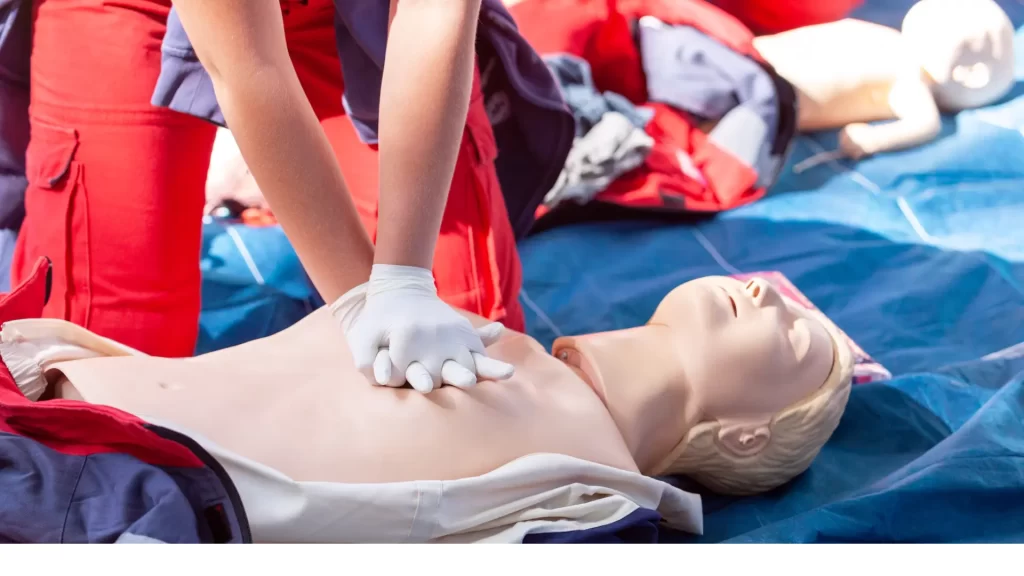
How Can My Company Schedule a Custom CPR Training Session Near Downtown Raleigh?
Scheduling an on-site training session for a group near Downtown Raleigh or in Wake Forest is a streamlined process designed for organizational efficiency. The goal is to move from initial contact to certification in the shortest, most effective time possible.
The typical process involves a few simple steps:
- Initial Contact and Consultation: The first step is to reach out to the certified training provider. You can easily contact CPR Classes Near Me Raleigh to clearly state your needs:
- Your desired location (e.g., Downtown Raleigh office, Wake Forest school).
- The approximate number of employees needing certification.
- The specific course required (e.g., BLS only, or BLS + First Aid).
- Your preferred dates and times. Flexible scheduling is often available to meet shift work or weekend needs.
- Logistics Planning and Quote: The provider will determine the necessary instructor and equipment ratios based on your group size. A formal quote covering the cost per student, materials, and travel will be provided. On-site training often results in competitive group pricing, offering significant value compared to individual registrations. Group discounts make this choice highly economical.
- Course Confirmation and Preparation: Once the date is confirmed, the training organization will handle all setup. The only requirements from your side are a suitable space (a large meeting room or common area) and confirmation of the attendees. This minimal preparation ensures a stress-free experience for your team.
- Training Day Execution: The instructor arrives at your Raleigh or Wake Forest location with all necessary, modern training equipment. The session is conducted in a professional yet relaxed environment, maximizing hands-on practice. The class takes approximately 3.7 hours for BLS certification.
- Same-Day Certification: Upon successful completion of the course, the instructor issues the official American Heart Association eCard to each certified participant immediately, concluding the training process efficiently and providing instant compliance verification.
This simple, five-step process ensures that securing group certification is swift, hassle-free, and customized to your corporate or organizational calendar. It’s the ultimate way to get certified on your terms.
What Makes CPR Classes Near Me Raleigh the Top On-Site Provider in the Area?
When investing in life-saving training, quality and reliability are the most important considerations. In the competitive Raleigh and Wake Forest market, CPR Classes Near Me Raleigh stands out as the premier choice for organizations seeking certified, convenient, and high-value group training. This distinction is built upon several core commitments:
- Exclusive American Heart Association Focus: Commitment to only offering the AHA BLS curriculum ensures your certification holds the highest value and is accepted by every major employer and licensing board in North Carolina and nationwide. Your organization can trust the quality of the credential.
- Unmatched Convenience and Accessibility: The company specializes in on-site delivery, guaranteeing that instructors can travel anywhere within the greater Raleigh area, including the specific needs of Downtown Raleigh businesses and institutions in Wake Forest. The instructors are experts in setting up effective training spaces in non-traditional environments, minimizing disruption to your workday.
- Guaranteed Same-Day Certification: Eliminating the wait time for official credentials is a huge benefit for busy professionals. The ability to issue the AHA BLS eCard immediately upon course completion ensures instant compliance for those who need it for licensing or employment. This is a crucial feature for time-sensitive renewals.
- Expert and Engaging Instructors: The team consists of local, certified trainers dedicated to delivering the finest training experience. Their approach emphasizes a fun, relaxed, and confidence-building atmosphere, moving beyond rote memorization to foster true mastery of life-saving skills. They use real-world experience to make the content relatable.
- Affordable, Transparent Pricing: With discounted rates starting as low as $59.95 for BLS CPR & AED Classes and $79.95 for the First Aid combination course, CPR Classes Near Me Raleigh ensures that securing the gold standard certification is highly accessible. This competitive pricing is paired with transparent practices, avoiding the hidden fees sometimes associated with other, less credible training options.
- A Dedication to Hands-On Excellence: The training model is centered entirely on ensuring every student gains practical competence. Instructors prioritize one-on-one feedback during the skills sessions to maximize retention and boost confidence in an emergency.
Choosing a provider that combines the gold standard of AHA certification with unparalleled on-site service and same-day credentials guarantees the best return on your investment in safety and compliance. It is a decision to prioritize quality, convenience, and professional recognition.
Conclusion: Secure Your Group’s Certification Today
The need for competent, certified CPR responders is constant in any thriving community, especially in high-traffic and rapidly growing areas like Downtown Raleigh and Wake Forest. By opting for on-site training through a certified American Heart Association provider, your organization can seamlessly integrate this crucial requirement into its operations. You are not just checking a compliance box; you are empowering your employees with the confidence and ability to save a life, making your workplace and community safer for everyone.
On-site CPR training is the most responsible, convenient, and cost-effective method for ensuring your entire team is professionally certified. It reduces downtime, guarantees the highest standard of certification (AHA), and delivers the eCards immediately.
Do not let complicated scheduling and travel logistics prevent your team from obtaining this essential certification. Take the proactive step today toward a safer, better-prepared workplace.
Ready to bring the gold standard of AHA certification directly to your office, school, or facility in Downtown Raleigh or Wake Forest?
Contact CPR Classes Near Me today to schedule your on-site group training session, or to inquire about custom group rates!
On-Site CPR Training: Frequently Asked Questions (FAQ)
1. How long does the on-site CPR certification training take for a group?
The typical length of the American Heart Association (AHA) BLS CPR & AED certification course, which includes the required video and hands-on skills practice, is approximately 3.7 hours. The AHA mandates a minimum duration to ensure thorough training and skills mastery. If your group chooses the combined CPR, AED, and First Aid course, the length will be slightly longer to accommodate the additional First Aid content, typically around 7 hours in total. This estimate is for the actual instruction and testing time, not including short breaks. By choosing the on-site model, the training provider works efficiently to ensure the course meets all AHA requirements while respecting your employees’ schedules, allowing them to earn their full, two-year certification in just a single training session.
2. Is the American Heart Association (AHA) certification received from on-site training truly accepted by all employers?
Yes, absolutely. The American Heart Association (AHA) Basic Life Support (BLS) certification is the most widely recognized and accepted CPR credential in the United States. It is considered the gold standard in emergency cardiovascular care training. Organizations like CPR Classes Near Me Raleigh are official AHA Certified Training Sites, meaning the content, instruction, and certification cards meet the highest national standard. This specific certification is the one required by nearly all healthcare employers (hospitals, clinics, medical offices), as well as schools, daycares, fitness centers, and other professional entities across Raleigh, Wake Forest, and the entire country. The AHA eCard you receive on the same day is the verifiable proof your employer needs for compliance and licensing purposes.
3. How often do my employees need to renew their CPR certification, and can we do the renewal on-site as well?
CPR certification is valid for two years from the date of successful course completion. This two-year period is the industry standard set by the American Heart Association. The renewal process is straightforward. For certification renewal, employees must enroll in an equivalent AHA BLS course, just like a first-time certification, to review new science and refresh skills. CPR Classes Near Me Raleigh offers renewal training that can also be conducted entirely on-site at your Downtown Raleigh or Wake Forest facility. The renewal course covers the latest science and techniques, allowing your team to maintain their current credential efficiently and conveniently without any lapse in their certification status.

